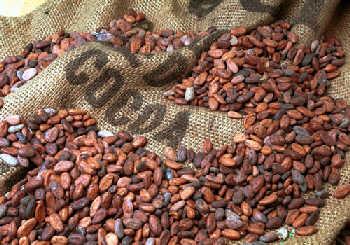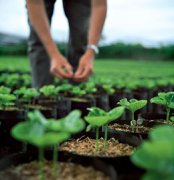CBB pest found in coffee trees in Hawaii

Coffee berry borer ravages the big island (red part). Photo: CBB translated by Huang Wei
The Department of Agriculture of the State of Hawaii (HDOA) confirmed on 12 May 2011 that a coffee pulp borer (CBB) pest (in Pahala in the Ka`u District of the Big Island) was found on a farm in Ka`u District, Hawaii Island. Ka`u is a coffee growing area and is currently being investigated to determine the extent of the damage to the coffee pulp borer.
Photo Source: STARADVERTISER
The coffee pulp fruit borer CBB (Hypothenemus hampei) was first discovered in the coffee producing area of Kona in September last year (2010). At present, it has ravaged the western part of the island. The United States Department of Agriculture is working with Kona coffee farmers to take various measures to control the spread of coffee berry borer pests.
Coffee pulp fruit borer (coffee berry borer: Hypothenemus hampe), originated in central Africa, is a beetle and the most harmful pest to coffee crops. 70% of coffee-producing countries are affected by it, mainly in Latin America. The female adults drill holes at the end of the coffee fruit and eat into the fruit to lay eggs; the eggs, larvae and pupae all develop in the fruit, and the adults drill out the fruit after Eclosion. The insect mainly harms ripe fruits and seeds, not only destroys the flavor of coffee, but also reduces coffee yield by 90% in serious cases. In February, the Department of Agriculture of Hawaii approved the use of "fungal Beauveria bassiana" (fungus Beauveria bassiana) to control the spread of coffee pulp borer.
Important Notice :
前街咖啡 FrontStreet Coffee has moved to new addredd:
FrontStreet Coffee Address: 315,Donghua East Road,GuangZhou
Tel:020 38364473
- Prev

The Origin of Yunnan small-grain Coffee
The origin of Yunnan small-grain coffee: in 1892, the French preacher Father Tian succeeded in experimenting with growing coffee in a place called Zhu Kula in Yunnan. To the city of Guzhu Kula, there are still 24 coffee trees with more than 90 years old. Zhu Kula is a mysterious, colorful and natural village, attached to the Zhukula Village Committee, Pingdi Town, Binchuan County, Dali Prefecture, located in the trunk of the Jinsha River.
- Next

The way coffee is grown. A conscientious coffee tree.
Coffee cultivation is now widely grown in the ribbon between the Tropic of Cancer and the Tropic of Cancer. Coffee grown in different regions has different flavors. The unique soil, climatic conditions and planting methods of a country make the coffee produced in that country have a unique flavor. French winemakers call this phenomenon regional style. Geographically, global coffee
Related
- Beginners will see the "Coffee pull flower" guide!
- What is the difference between ice blog purified milk and ordinary milk coffee?
- Why is the Philippines the largest producer of crops in Liberia?
- For coffee extraction, should the fine powder be retained?
- How does extracted espresso fill pressed powder? How much strength does it take to press the powder?
- How to make jasmine cold extract coffee? Is the jasmine + latte good?
- Will this little toy really make the coffee taste better? How does Lily Drip affect coffee extraction?
- Will the action of slapping the filter cup also affect coffee extraction?
- What's the difference between powder-to-water ratio and powder-to-liquid ratio?
- What is the Ethiopian local species? What does it have to do with Heirloom native species?

